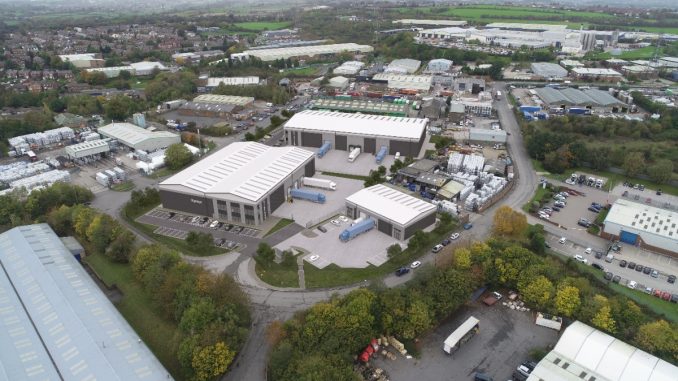Building a substation the natural way
With a growing demand for increased biodiversity in all areas of construction, in this timely article, Brian Palmer, a Senior Civil Designer at Burns & McDonnell, looks at how substations can be built in a more environmental manner.

Environmental deterioration has captured the world’s attention, there’s a growing focus on the impact of construction projects on their natural environment. The Environment Bill, expected to be enacted this Autumn, will mandate a 10% biodiversity net gain requirement for housing and development projects. Accordingly, National Grid has set a 10% net gain in environmental value target on all construction projects. This is a positive milestone on the road to Net Zero, but to be achieved effectively, it will demand modernisation, innovation, and creative thinking on the part of energy network developers and engineers.
A strategic area where such innovations can help achieve environmental net gain is substations. A substation is just a load of brick, concrete and steel, right? Industrial, ugly, unnatural. However, by prioritising natural capital, biodiversity and architecture sympathetic to the local surroundings, substations can be built ‘the natural way’ to bolster sustainability and societal benefit.
Sympathetic architecture
Developing sympathetic architecture means more than simply focusing on the aesthetic of the building being designed and constructed. It means developing architecture with a clear sense of place, taking into consideration the substation’s local surroundings and nearby buildings. If the substation is in a rural area, for example, can it be made to look similar in style to farm buildings? If it’s suburban, brick may be more appropriate to blend into its surroundings.
Sympathetic architecture is more considerate to local communities and can be beneficial to the wellbeing of an entire area. Scientific studies have shown the relationship between architectural design and human psychology to be significant. Here sustainability is about more than just impact on CO2 levels, creating wider benefits for the communities around substation sites.
Supporting the community
Being present on site for an extended period provides the opportunity to share benefits with the local community and make a positive contribution to society. This can include participation in education programmes, helping teach communities about their area and the ways in which they can care for their environment. It is also important to involve the community in key decisions, provide support in the form of jobs, new facilities, and the improved use of the substation area. Progress Power, to take an example, is taking an area of arable land and planting trees and a meadow, making the area generally more attractive to walkers.
Biodiversity
Utilising the entirety of a substation site in a sensitive and optimised way generates positive impacts for local wildlife. Since the climate crisis is clearly linked to biodiversity depletion, fostering biodiverse landscapes during construction creates benefits beyond the immediate surroundings of the substation itself.
Practical applications can include creating animal habitats in the area through appropriate landscaping. There are also other man-made options for creating areas conducive to flourishing animal and plant life. This includes creating hibernaculum – underground chambers that animals can use throughout the winter to protect themselves from the cold. Bat boxes and bee embankments are also relatively easy methods of creating wildlife-friendly habitats.
Planting wildflower meadows in unused areas outside the main substation can create lively feeding and nesting grounds for insects, birds, and small animals. Choosing flora which is consistent with the local area helps support a healthy wildlife population. Consultation with local conservation groups is essential for understanding and implementing appropriate interventions.
Natural capital and ecosystem services
Building a substation the natural way means considering the full potential of the surrounding environment and its natural resources. Natural capital often provides ecosystem services that generate environmental benefits organically, and this potential should be incorporated into design and construction processes wherever possible. For example, as well as providing habitats for certain wildlife, peat bogs naturally capture carbon, when building roads through peat areas consider constructing floating roads which have lower environmental impact.
Earthworks removed as part of the build process can also be used for wildlife-friendly landscaping at the substation site, while also creating visual screening. By not importing or exporting material from site the carbon impact can be reduced, while also saving on transport costs and disruption to the local community.
Again, there are potential socioeconomic benefits of utilising natural capital, and these considerations should play a central role in substation development. Examples of leveraging natural capital in this way include building footpaths in the surrounding landscaping, or providing space for community parks, orchards, or woodland.
Thinking outside the box generates widespread benefits
The considerations above should be fed into the design process from day one. Building the natural way should be treated as a holistic process, the value of which should be calculated and communicated effectively to clients from the beginning. Some of these innovations risk increasing the costs and maintenance requirements of a substation build. But this too can be mitigated by building processes efficiently into the entire lifecycle of a project.
The benefits of natural substation development go far beyond simply supporting the Net Zero agenda. True, substations are critical infrastructure upon which we all rely. But we mustn’t discount the potential to have a more positive impact on communities, wildlife, and landscapes. As clients produce more enhanced sustainability strategies, integrating sustainability into the design and build process will complement this and strengthen client relationships in the process.
Developing measurement tools and tactics that consider the wider community and environmental positives is essential. While metrics are hugely important, we must remember that not all benefits can be measured on a spreadsheet. This, after all, is what sustainability is truly about.

Brian Palmer is a Senior Civil Designer at Burns & McDonnell, with specialisms in Building Information Modelling (BIM) management and Generative Design.
The post Building a substation the natural way appeared first on Construction Industry News.







